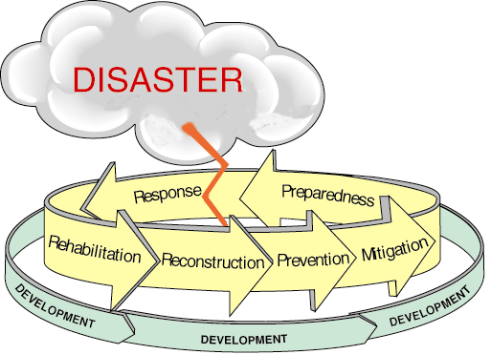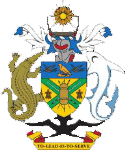Disaster preparedness are measures taken to prepare for and reduce the effects of disasters.
It includes taking necessary action(s) to predict and where possible, prevent disasters, mitigate their impact on vulnerable populations as well as to effectively cope with their consequences.
Disaster preparedness provides a platform to design effective, realistic and coordinated planning, reduces duplication of efforts and increase overall effectiveness of national, community and household disaster preparedness and response efforts (IFRC).
In Solomon Islands, this platform is provided through the National Disaster Risk Management Plan 2010.
This plan and any future replacement of it, provides for the establishment of institutional arrangements for the national Government to address disaster risk management within the Solomon Islands.
It provides for both disaster management arrangements for preparing for, managing and recovering from disaster events and institutional mechanisms for addressing disaster risk reduction, including climate change adaptation. Arrangements are addressed at the national, provincial and local levels.
This plan states that disaster risk management requires a policy consideration, in order to to establish obligations and roles, set arrangements and accountabilities and to provide for national planning. It has been prepared and endorsed by the National Disaster Council (NDC) established under Section 3 of the National Disaster Council Act 1989 and approved by the Cabinet of the Solomon Islands Government under Section 10 of the Act.
The plan and other preparedness activities such as the raising of public knowledge and awareness of disaster types (hazards) and how to respond to them are implemented by the Ministry of Environment, Climate Change, Disaster Management and Meteorology’s National Disaster Management Office (NDMO).
In carrying out its mandate, the NDMO is supported by Agencies including the private sector, Provincial Government and community disaster response committees as well as by various Non Governmental Organisations (NGOs) and Civil Society Organisations (CSOs).
Disaster preparedness activities embedded with risk reduction measures can prevent disaster situations and also result in saving maximum lives and livelihoods during any disaster situation, enabling the affected population to get back to normalcy within a short time period.
In this respect, disaster preparedness is a continuous and integrated process resulting from a wide range of risk reduction activities and resources rather than from a distinct sectoral activity by itself. It requires the contributions of many different areas—ranging from awareness, training and logistics, to health care, recovery, livelihood to institutional development.
Disaster Preparedness and Communities
Disaster risk management (DRM) is about reducing risks to communities from hazards and their effect.
Communities, who know their local hazards best, are the immediate responders to problems, and are ultimately in charge of the recovery process.
Communities must therefore, with help and support, look at ways to reduce their vulnerability to hazards and increase their capacity to cope with the effects of disasters.
The National Disaster Management Office (NDMO) has made plans to develop and strengthen DRM capacity in Solomon Islands over the next few years.
This will empower communities in DRM rather than create dependencies. The NDMO Plan is focused on:
-
Assisting communities to become better aware and prepared for disasters;
-
Maintaining an effective network and partnership with stakeholders;
-
Assisting in the development and maintenance of an effective disaster preparedness and response capability and capacity nation-wide. The NDMO is committed to our plan and its achievement. I appeal to stakeholders and communities wishing to promote disaster risk reduction in Solomon Islands to support this Plan and work with us in its fulfillment.
Disaster Risk Management Cycle (DRM)
What is the DRM?

The Disaster Risk Management (DRM) Cycle illustrates the ongoing process by which governments, businesses, and civil society plan for and reduce the impact of disasters, react during and immediately following a disaster, and take steps to recover after a disaster has occurred.
Appropriate actions at all points in the cycle lead to greater preparedness, better warnings, reduced vulnerability or the prevention of disasters during the next iteration of the cycle.
The complete disaster risk management cycle includes the shaping of public policies and plans that either modify the causes of disasters or mitigate their effects on people, property, and infrastructure.

